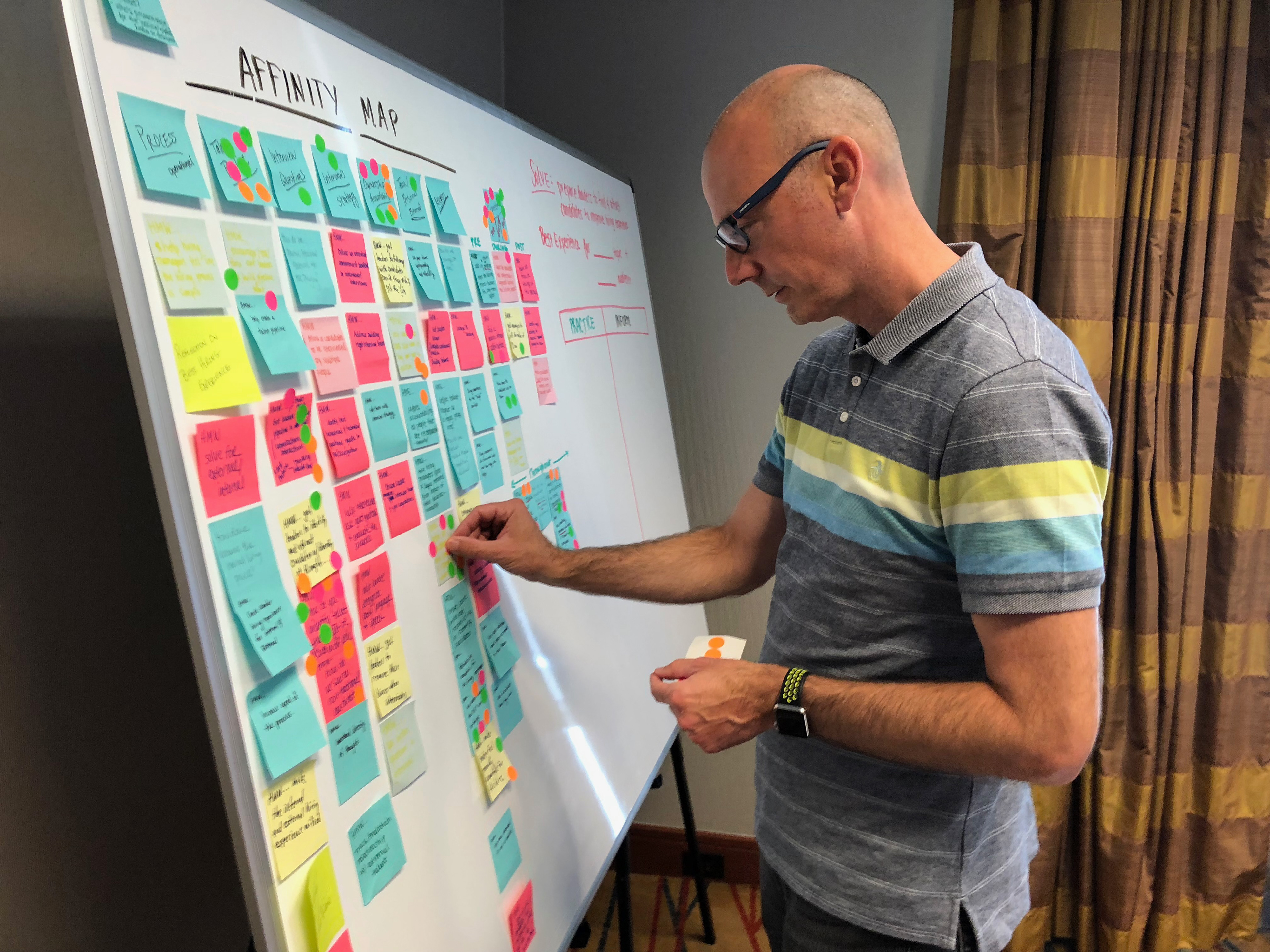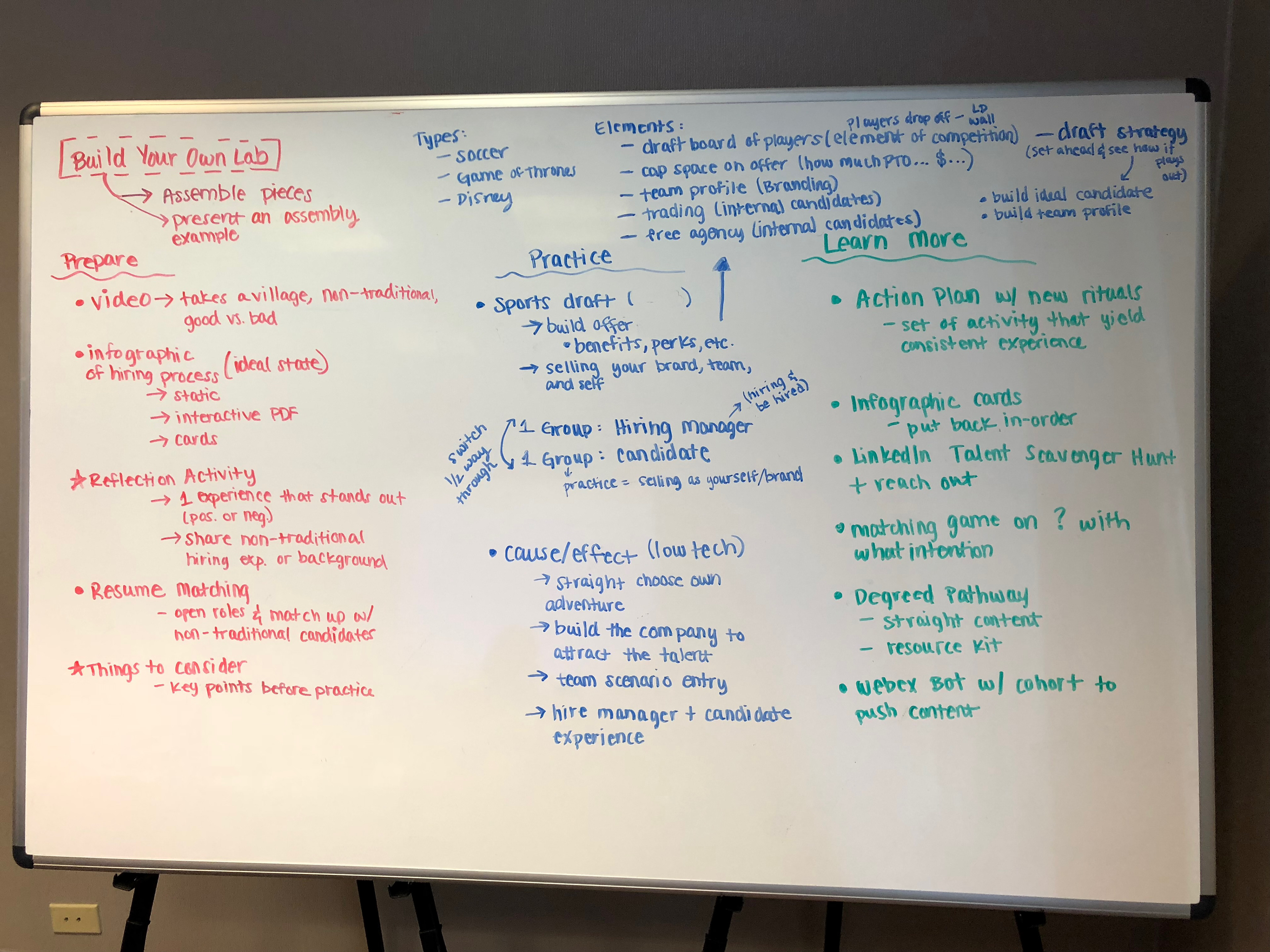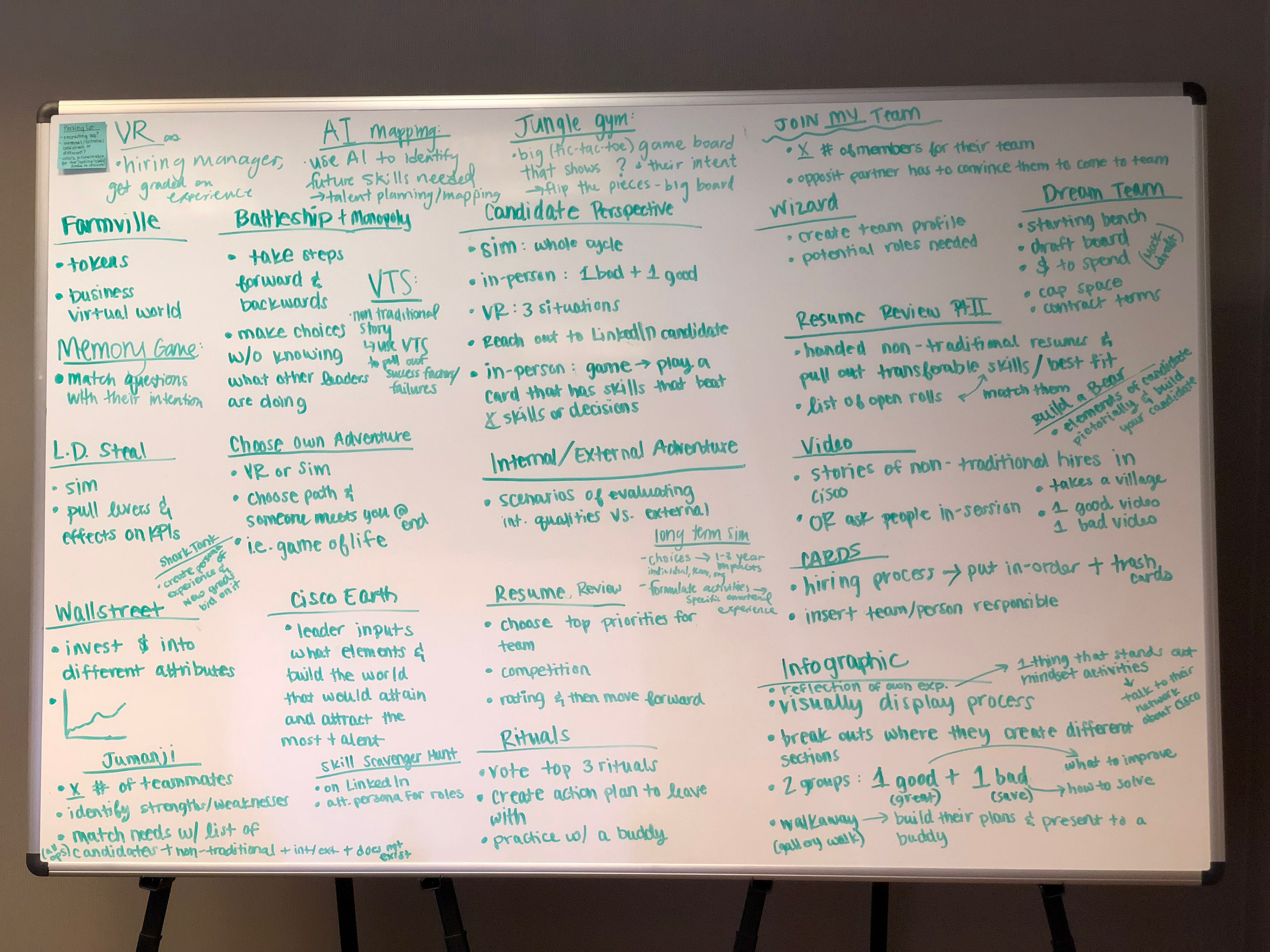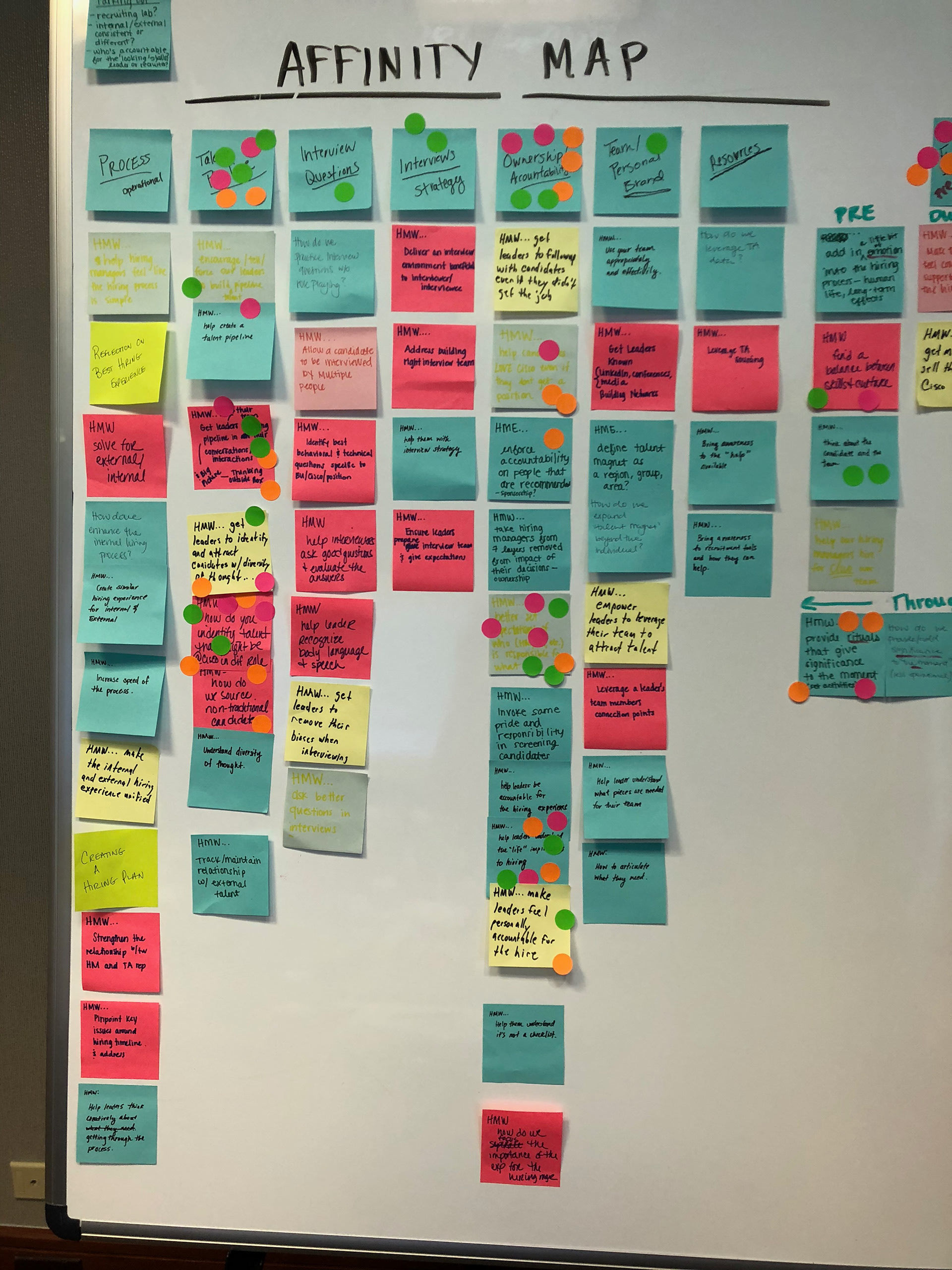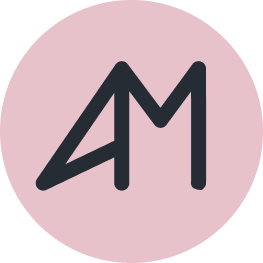My Role
Business Engagement Consultant, Technical Learning Curriculum Manager, UI/UX Designer, Lead UX Designer, Design Leader
Business Engagement Consultant, Technical Learning Curriculum Manager, UI/UX Designer, Lead UX Designer, Design Leader
The Key Skills
Design Thinking, Design Sprints, Facilitation, Workshops, Miro
Timeline
2018 - Present
2018 - Present
The Background
Design thinking has always been a part of my career journey. I didn't really know what design thinking really was until I was a part of my first workshop. It was something I naturally did, but just didn't have a formal way of articulating it. From then on, I've been heavily involved in either bringing Design Thinking courses to Cisco, facilitating them and ultimately training others how to use design thinking. For first 10 years or so, I mostly either participated or evaluated design thinking workshops. Once I took on the learning UX designer role, did I actually begin to start facilitating. It's now a very big part of what I do today, bringing others along as we solve problems using design thinking.
If I take a step back, we head back to Leader Learning Labs where not only was I the first UX designer, but also we were about to embark on a journey changing how companies approach learning in general. We were shifting to viewing learning and development as product. Switching from instructional designer to UX designers, and that's where we came across Google's Design Sprint Toolkit. This is the framework we used to create labs, and this is where my facilitation journey began.
Over the last 3 or so years, I've facilitated well over 100+ hours of workshops, trainings, sprints, and sessions. From facilitating design thinking workshops at our HR Senior Leadership Offsite in 2018 where I brought roughly 100 senior leaders and executives through a 45 minute workshop to facilitating and participating in design sessions to craft our Cisco Skills Strategy to whipping out a design thinking method in Miro in the moment to help the team thinking through a small problem. Design Thinking is not just something I do, but it's just something that's a part of me. Check out some of the examples below.
Lessons Learned
I've learned that when people are skeptical of design thinking, the only real way they buy in is if you show them. I'm not talking about bringing in a vendor to facilitate some generic workshop, or sending them a video, I mean really show them how it can be done with what they do. I've found it's most successful when you take a problem they are trying to solve, and show them how design thinking and/or sprints can get them a solution with a cross-functional team. So show them with something that matters.
Having the right tools is important, especially in a complete virtual world and the future hybrid world. Finally getting Miro was game changing, it showed people that you can do this virtually but it actually works better virtually. It's more inclusive and ultimately cheaper than flying people to some location. Don't get me wrong, I can't wait for the in person sessions, but using Miro, or something similar, will be what makes it successful in a hybrid world. You can have people in a room, and people calling in from another location. It evens allows for easy offline work.
The Examples
Below you'll find short descriptions of how I've used design thinking and design sprints.
Design Sprints
In People & Communities (HR), design thinking had a perception of just being a buzzword and many didn't really understand how it could be applied into their work. They viewed it more of a way to build products, and not a way to solve problems. It's a little easier in L&D where the connection was easier to make, we build learning experiences which are products. In our second Leader Learning Lab, I facilitated my first Design Sprint. While ideally a Design Sprint is 5 days, but we would only have 2.5 days, since we had to fly everyone in. I ultimately followed the process, but split it up to do the most of the Understand and Define phase ahead of time. We did a condensed Understand phase in person, and focused mostly on the Sketch and Decide phase. Ultimately, this was a huge success and we proceed to use this tweaked version to build 3 more labs in a matter of 7 months when traditionally, the creation of these would take a quarter each (one at a time).
Helping HR Professionals Understand the Power of Design Thinking
I mentioned facilitating a workshop at HRSO above, but that wasn't the only time I've facilitated workshops or training session to help others, mostly HR professionals, learn about what design thinking is and how it can be applied in their work. I've spent most of my time showing others how this is mindset, and how it's simply a way to solve problems, any problem. I've also facilitated a 2 day workshop to help the HR community in RTP solve a real problem while also showing them how they could use design thinking outside of building "products". Most recently, I held a training for my organization to help train more design thinking facilitators. This is simply the result of years of showing those within HR that design thinking powerful, and the requests for helping them run design sessions has greatly increased as well as it simply being part of how we consult and solve problems.
Strategy Sessions
Design thinking is just now a part of how we work, and being the lead UX designer and master facilitator, I spend a lot of time helping the team and our leadership team think through more strategic problems using design thinking and design sprints. We kickstarted our Skills Strategy work using as shorten Design Sprint over 3 half days due to the global team and managing timezones. I'm responsible for understanding the problem or the challenge statement we are trying to solve for with our leadership team, building out the sessions in Miro, facilitating, synthesizing and consolidating the results, and ultimately creating the pitch deck and subsequent documents/decks.
Design Thinking in a Virtual COVID-19 World
Just like every person and industry suffered with making the transition into a fully virtual world, even a team that was mostly remote pre-covid struggled with this. We were used to having in person planning meetings and offsite where we could just whiteboards and sticky notes. That was all gone, so how were we going to do this virtually. We've played early on with online white boarding tools and never had any luck with them, and just simply decided to do things in person. The pandemic forced us to solve this problem, and this is where Miro came into play. It was now easier to find the funding and support to use a tool for this (go figure) and that's where the adoption and desire to learn and use design thinking exploded. A good problem to have, and I wouldn't have it any other way.
Design Sprints in Learning Product Design
As our team transitioned to learning product design, I had the team really lean into Design Thinking and Design Sprints. We all too AJ&Smart’s new Enterprise Innovation Toolkit program and incorporated Design Sprints into the first step of our design process for our big problems that needed solving. We use Design Sprints for those big problems with our stakeholders that are willing and ready to jump into a different way of solving problems and building services and products. This is still a work in progress, but the team is has already proven it works with the latest update of the Security Space Center
